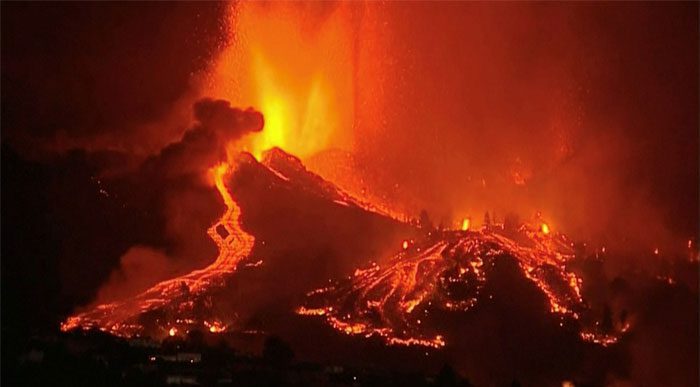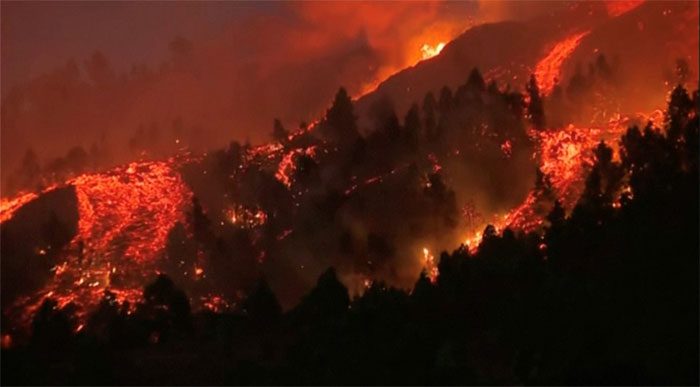Authorities have begun evacuating residents and livestock from nearby villages before the eruption occurred at 3:15 PM (14:15 GMT) in Cabeza de Vaca, according to the Canary Islands government.
Two hours later, lava began to flow from fissures, engulfing hillsides. Fortunately, the city had ordered the evacuation of four villages, including El Paso and Los Llanos de Aridane.
After nightfall, video footage showed lava fountains shooting hundreds of meters into the sky, with at least three rivers of molten orange lava gradually flowing down the hills, gas fumes spreading thickly across the atmosphere.
A lava flow several hundred meters long submerged scattered houses in El Paso.
“Today, seeing the volcano erupt, I was very scared. For journalists, it is something spectacular; however, for us, it is a tragedy. I am very worried about my loved ones,” said Isabel Fuentes, 55, to the Spanish television channel TVE.
Fuentes added: “The last time the volcano erupted (in 1971), I was only 5 years old.”

Lava erupting from a volcano in Cumbre Vieja National Park at El Paso, on the Canary Island of La Palma, on September 19, 2021. (Photo: Reuters).
“Stay indoors”
The President of the Canary Islands, Angel Victor Torres, stated at a press conference on the evening of September 19 that 5,000 people had been evacuated and no casualties had been reported so far.
He said: “However, we cannot predict what will happen. The lava is moving towards the coast, according to experts, there are about 17-20 million cubic meters of lava.”
Flights to and from the Canaries continue as normal, according to airport operator Aena.
Spanish Prime Minister Pedro Sanchez visited La Palma, the island located in the northwest of the archipelago, late on September 19 to discuss with local authorities how to manage the aftermath.
He stated: “We have all the resources to handle this; the public can rest assured.”

The volcanic eruption has caused concern among residents. (Photo: Reuters).
Stavros Meletlidis, a volcanologist at the Spanish Geographic Institute, noted that the eruption had created five vents on the hillside, and he could not be sure of the consequences.
“We will have to measure the lava every day.”
Previously, La Palma had been placed on high alert after more than 22,000 tremors were reported within a week at Cumbre Vieja, a volcanic range that last erupted in 1971 and is one of the most active volcanic regions in the Canaries.
In 1971, a man died while taking photos near a lava flow, but no property was damaged.
The earliest recorded eruption in La Palma was in 1430, according to the National Geographic Institute of Spain (ING).


















































